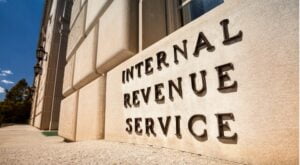The IRS recently announced some welcome news for higher-income workers with 401(k)s and similar retirement plans. The agency delayed implementing a new rule that would have required catch-up contributions made by people earning over $145,000 to be directed into an after-tax Roth account.
Originally set to start in 2024, the rule change will now be postponed until 2026 thanks to a new two-year administrative transition period. This extension gives savers who are both nearing retirement and earning over $145,000 two additional years to make catch-up contributions on a pre-tax basis.
The Roth catch-up requirement is part of the SECURE Act 2.0 that was signed into law in late 2022. The legislation mandated that starting in 2024, any catch-up contributions made by someone earning over $145,000 must be made on a Roth basis. However, due to an oversight in the legislation, the provision allowing catch-up contributions for savers at every income level was mistakenly deleted, potentially ending catch-up contributions entirely after 2023. While Congress has acknowledged the error, no corrective legislation has been passed yet.
The IRS stepped in to address the issue by clarifying that catch-up contributions can continue as before in 2024 and beyond, regardless of the language of the law. This announcement provides relief to retirement savers who were at risk of losing the opportunity to make catch-up contributions.
The accidental removal of catch-up contributions could have had serious implications for those over 50 who were nearing retirement. Catch-up contributions enable these individuals to bolster their retirement savings above the regular annual limits, ensuring a more secure financial future. Additionally, the burden posed by the Roth requirement for higher earners has been temporarily lifted, giving savers more financial flexibility until 2026.
In conclusion, the IRS’s transitional relief and clarification provide retirement savers with more flexibility and peace of mind. If you’re over 50 and nearing retirement, take advantage of the additional years for pre-tax catch-up contributions before the Roth rule takes effect. Consider speaking with a financial advisor to develop a plan that aligns with your retirement goals and takes advantage of these changes.
By staying informed and making strategic decisions, you can maximize your retirement savings and ensure a more financially secure future. If you need help navigating these changes and optimizing your retirement plan, consider reaching out to a financial advisor for personalized guidance. The recent announcement by the IRS offers some positive news for retirement savers, providing a valuable opportunity to enhance financial security in the years ahead.
Source link


